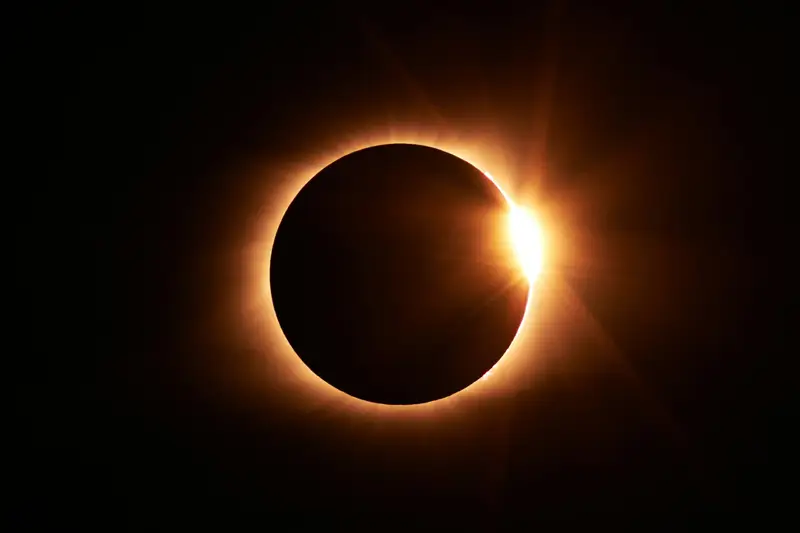What is a Total Solar Eclipse?
A total solar eclipse is a celestial event that occurs when the moon passes between the sun and the Earth, blocking the sun’s light and casting a shadow on the Earth’s surface. It’s a rare phenomenon that leaves spectators in awe as the sky turns dark, stars become visible, and the sun’s corona—a glowing halo of plasma—shines brightly around the moon.
The Total Solar Eclipse of 2024
One of the most highly anticipated total solar eclipses of the century is set to occur on April 8, 2024. This celestial spectacle will be visible across North America, making it a once-in-a-lifetime event for many. The path of totality, where the moon will completely cover the sun, will stretch from Mexico to Canada, passing through several states including Texas, Arkansas, Missouri, Illinois, Indiana, Ohio, New York, and Vermont.
Who Gets to See It?
Unlike many astronomical events, which can only be observed from specific locations, the 2024 total solar eclipse will be visible to a large portion of the North American population. Millions of people will have the opportunity to witness this awe-inspiring event. However, keep in mind that the experience will vary depending on your location within the path of totality.
What to Expect?
If you are lucky enough to be in the path of totality during the 2024 total solar eclipse, you can expect an unforgettable experience. As the moon moves in front of the sun, the sky will gradually darken, and the temperature may drop. Birds and other animals may become confused and start behaving as if it’s nighttime. It’s a surreal moment that often leaves spectators in awe of the wonders of the universe.
During the brief period of totality, when the sun is completely covered by the moon, you will be able to see the sun’s corona—a magnificent sight that is usually hidden by the sun’s bright light. The corona appears as a delicate, glowing halo surrounding the moon. It’s an ethereal and breathtaking sight that can only be fully appreciated in person.
It’s important to note that observing a solar eclipse requires proper eye protection. Looking directly at the sun, even during an eclipse, can cause serious eye damage. Make sure to use certified eclipse glasses or handheld solar viewers to safely view the event. These protective eyewear filters out harmful ultraviolet and infrared rays, allowing you to enjoy the eclipse without risking your vision.
How to Make the Most of the Experience
To make the most of the 2024 total solar eclipse, it’s a good idea to plan ahead. Research the path of totality and choose a location where you will have the best chance of clear skies. Consider traveling to a spot within the path if it’s not accessible from your current location. Be prepared for large crowds and make sure to arrive early to secure a good viewing spot.
Capture the moment by bringing a camera or smartphone with you. However, keep in mind that taking photos during the eclipse can be challenging. It’s best to practice beforehand and use a solar filter to protect your camera lens. Remember to also take a moment to simply enjoy the experience without the distraction of technology.
Lastly, don’t forget to dress appropriately for the weather. Even if it’s a warm day, the temperature can drop significantly during the eclipse, so bring layers to stay comfortable. And most importantly, take the time to fully immerse yourself in this extraordinary event. Witnessing a total solar eclipse is a rare privilege, so make sure to savor every second of it.
In conclusion, the 2024 total solar eclipse is an event that promises to captivate millions of people across North America. Whether you are in the path of totality or observing a partial eclipse, it’s an opportunity to witness the beauty and grandeur of our universe. So mark your calendars, prepare your viewing equipment, and get ready for a truly unforgettable experience.

